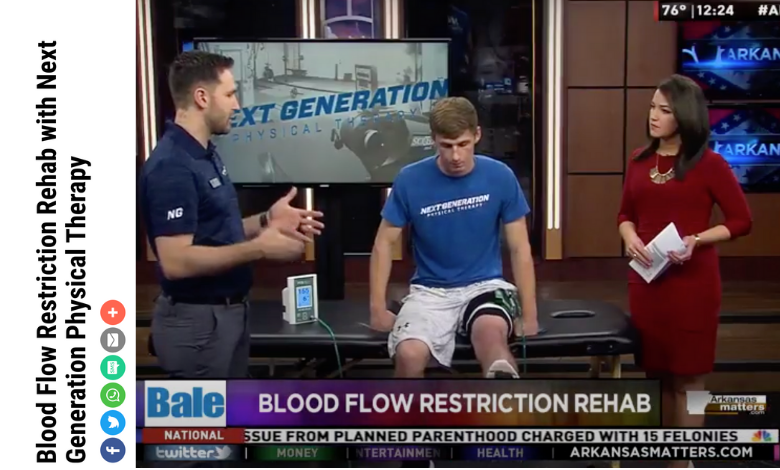CABOT, Ark. -- The team at Next Generation Physical Therapy works to bring their patients the latest rehabilitation technology. Personalized blood flow restriction is the application of a specialized tourniquet system to an injured limb to temporarily reduce the amount of blood in the exercising limb. By doing this, you allow a patient the ability to lift very light weights and still see similar results as lifting heavy. This technique was researched and applied extensively on Wounded Warriors who had suffered blast trauma at the militaries flagship amputee facility the Center for the Intrepid in San Antonio Texas. The initial results were amazing, the military published these results in the Special Forces Medical Journal. They now apply it throughout the DOD, especially within the Special Forces, and have a number of large clinical trials on the way. This type of rehabilitation has seen wide success in the military and college and professional teams. Owens Recovery Science, the company that trains clinicians in blood flow restriction rehabilitation and distributes the units in the US, has over 106 college and professional teams as clients including the Univ of Arkansas. The BFR system is finalizing clearance in Europe and training and application should start over there within the next couple of months. Many professional and college teams are also utilizing this technique for performance improvement. Examples include the use of it throughout a competitive season so the athletes don't have to lift heavy weights with an upcoming game or older athletes whose joints may not be able to tolerate heavy loads. When people are injured they start to lose muscle mass through a process called anabolic resistance, basically the muscle slows it's ability to synthesize protein. This results in significant amounts of muscle loss in the injured limb. Previously, the only known way to reverse this process was through lifting heavy weights. Unfortunately, you can't do that after injury or surgery and lifting lightweights, which is what typically occurs in rehabilitation, does not reverse or slow this process. Researchers have demonstrated that lifting lightweights while under blood flow restriction can reverse this process and has similar results to lifting heavy weights. There are at least 14 clinical trials currently studying the effects of BFR training in clinical populations looking at everything from sports injuries to healing tendons and broken bones. Current trials (enrolling did not include pilot data trials): * Anterior Cruciate Ligament Injuries (7) * Total Knee Replacements * Tendinopathies * Wrist Fractures * Cartilage Injuries * Fractures (femur) * Chronic Weakness after Surgery * There are published papers demonstrating improved functional changes, strength, muscle size and reduced pain in clinical populations such as ACL, knee scopes, anterior knee pain and females with arthritis. Check out our podcast on the applications of BFR PT and who can benefit from it to learn more about the benefits of this form of therapy.
Blood Flow Restriction Rehab with Next Generation Physical Therapy


